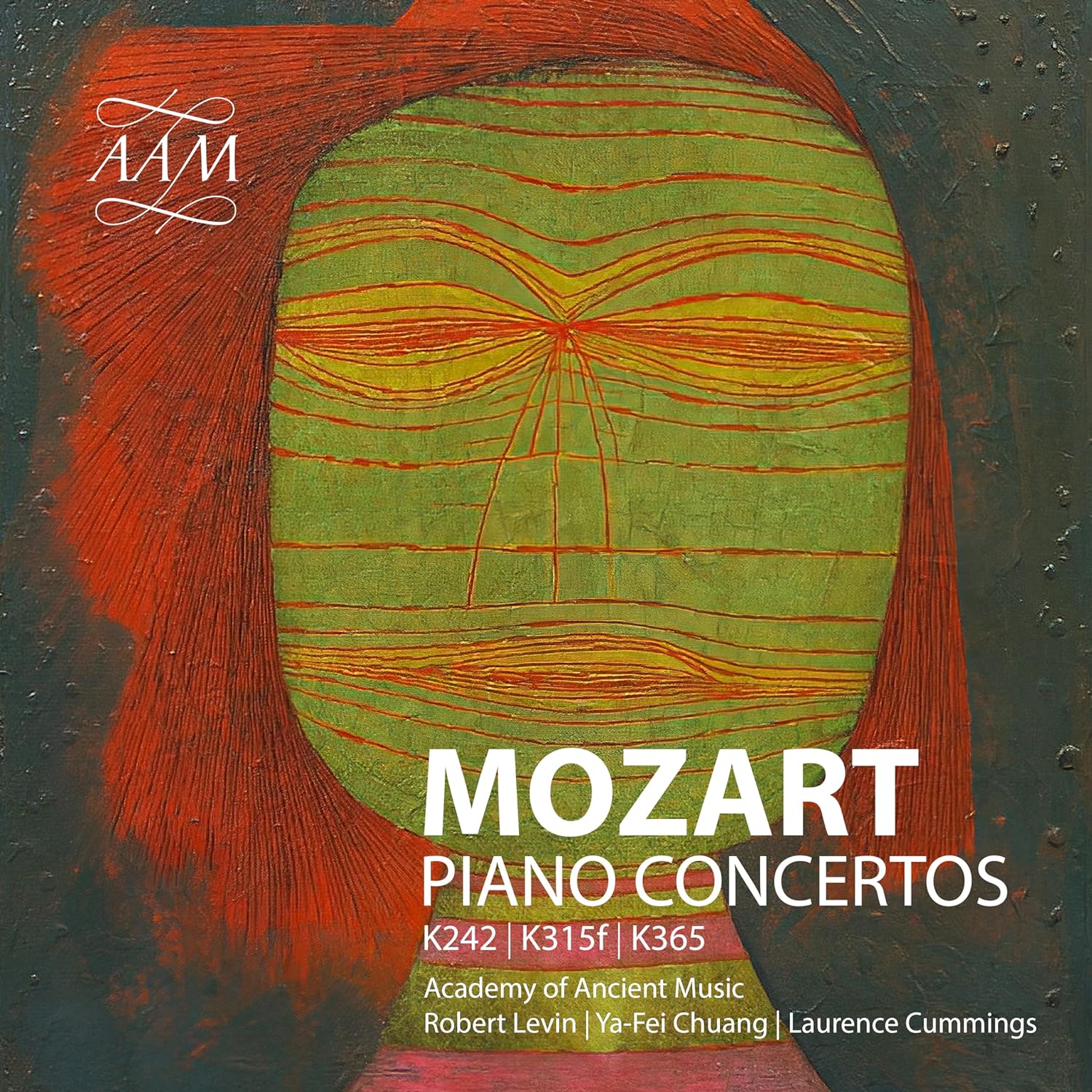Robert Levin and the AAM in Mozart's Concertos for Multiple Instruments
Don't hesitate - this is the nexus of musicology and the sheer excitement of joyous music-making

What a delightful surprise it was to find that Robert Levin was continuing a Mozart cycle with the Academy of Ancient Music he started decades ago .... This post comes the morning after a superb concert by the AAM at Milton Court (report soon).
I had the pleasure and privilege of meeting Robert Levin in the recording sessions for one of the other volumes at St John's, Smith Square, and interview in him subsequently for International Piano magazine. The sessions were for the famous Piano Concerto No. 21 in C (no, I'm not going to mention Elvira Madigan); here, we have the newest volume of this splendid series, which began back in 1993. When it finishes, this will be the first ever recording of Mozart's complete works for keyboard and orchestra on either modern or historical instruments. There are two remaining volumes after this one. A coupling of Piano Concertos No. 6 and 8 plus No. 7 (for three pianos) is scheduled for February 2024; finally, the Piano Concertos Nos. 25 & 27, plus the concert aria Ch'io mi scordi di te, K 505, are due out in June 2024.
Listen to the brightness, and the utter Mozartian wisdom, of the first movement of K 242, the Piano Concerto No. 7, here in its version for two pianos. The other pianist is Ya-Fei Chuang:
The concerto was written in 1776, originally for three keyboards. Nine leaves of MOzart's score have the reduction for two, and musicological detective work suggests they date from around 1780. This two-keyboard version is superbly performed here: just listen to the cadenza above.
The two instruments are copies of instruments by Andreas Stein (Augsburg, 1786) - the pitch is A = 430 Hz. The fortepianos have the perfect amount of sustaining tone for the beautiful Adagio, and again there is just the perfect cadenza; Levin and Chuang are perfect equals:
The finale is a Tempo di menuetto, full of gentilité and delight. LIsten to the evenness of articulation from the two pianists:
The Concerto Movement for Piano, Violin and Orchestra in D, K Anh 56 (No. 56 in the appendix of the Köchel catalogue, in other words: “Anh” = Anhang)/(315f) is a fragment that has been completed by Levin himself. This dates from Mannheim from late 1778. Part of a planned concerto for keyboard. and violin, it needs a performance such as this, with two strong and equal personalities: the AAM's leader, Bojan Čicíć, and of course Levin himself. The two handle dialogue superbly, Levin's right-hand as equal as Čicíć's articulation; Čicíć's playing just as in tune as Levin's superbly prepared fortepiano. Listen out for the almost processional grandeur of trumpet and drums later on in the movement, surely anticipatory of the Concerto No. 25 in C major:
Finally, the Concerto for Two Pianos in E flat, K 365 (316a). There is a musicological conundrum here: two sources, both foriginally rom Salzburg (one of them now resides in Olomouc in the Czech Republic) - neither of which included the clarinets, trumpets and drums of the 1881 Breitkopf published score. To make maters worse, the Czech MS includes double-basses - but no cellos! . This recording uses only double-basses, which by creating a registral space in the orchestra, allows for extra prominence of the keyboard left-hand parts!.
The decision was made to have only one keyboard as continuo (Levin) despite Mozart's marking that both should - this lightens the texture. And one can certainly hear the different characters of the two instruments in this performance. It's delightful on all levels:
The joy listening to this first movement gave me is indescribable. When one hears Mozart performed to this level, it is like all else peels off and one is left in some sort of heavenly space. I haven't heard two-keyboard playing like this since Brendel and Imogen Cooper in their classic Mozart two-piano recording for Philips; and Levin and Chuang have a similar sort of 'glue' between them - as did another famous duo, Christoph Eschenbach and Justus Franz (who recorded Mozart for DG).
The Andante begins with one of those sublime moments when a woodwind sustained tone (this time oboe) is held over mobile strings before blossoming out. Leo Duarte is the superb principal oboe here:
The finale really demonstrates how the timbral differentiation between the two instruments works so well here, and there is a proper sense of exchange between the two - two separate characters, as it were. And when the music plunges into the minor, what an effect it has!:
A fine continuation of a landmark recorded series that is carving itself a place of great honour in the history books. Don't hesitate - this is the nexus of musicology and the sheer excitement of joyous music-making.
Embedded iFrame
